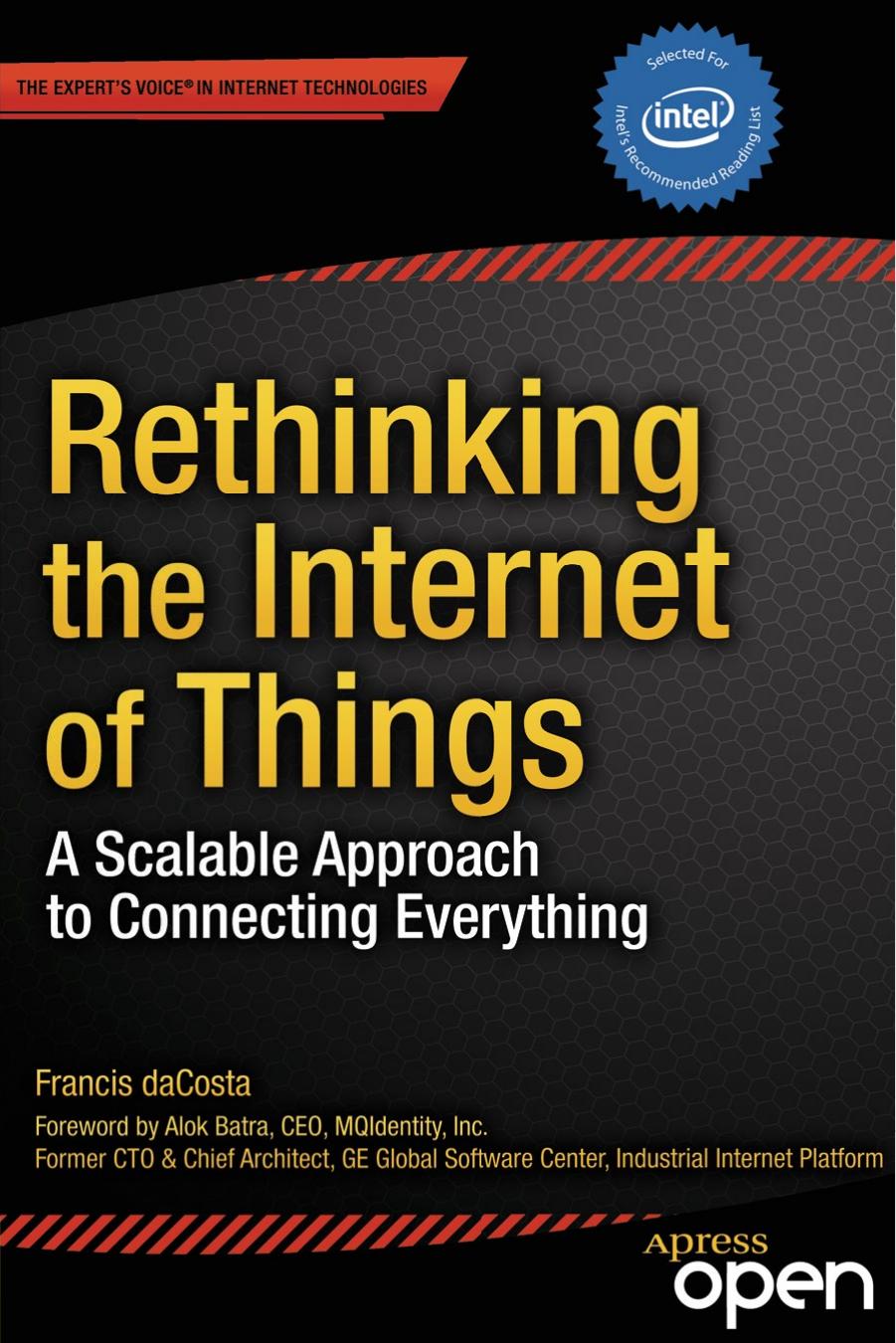Rethinking the Internet of Things by Francis daCosta

Author:Francis daCosta
Language: eng
Format: mobi, pdf
ISBN: 9781430257400
Publisher: Apress
Neighborhoods and Affinities
Internet of Things neighborhoods may be thought of as interesting aggregations of data sources that may be examined and collected by an integrator function. Locating and subscribing to a particular chirp stream may be directed by human programming (e.g., “monitor all moisture sensors in agricultural fields in these four counties”).
In this case, the neighborhood is defined geographically, so the integrator function may seek out interesting data streams from many candidates by searching for a particular “signature” of device type (from markers in the chirp packet; see Chapter 6) and location information appended by propagator nodes. Subscribing to these streams allows the integrator function to build up not only a snapshot of current conditions but also to observe changes over time. This data may then be used to generate reports or alarms as needed for human observation.
But the preceding example is not much different from a point-to-point IP data stream type of relationship. In fact, IoT neighborhoods need not be bounded by geography, end device type, or any other characteristic. Nor need they be preset by human operators. Instead, they may collect chirps across a wide spectrum of small data flows.
By subscribing to soil moisture sensors, temperature gauges, weather reports, reservoir levels, electric utility time-of-day rates, video images of crop height and ripeness, and so on, it might be possible to create a model that will allow the most cost-effective and timely irrigation of fields, for example. This could be effected either by outputting a report to a human field hand, or the integrator function might simply open the correct valves for the precise time needed (see Figure 2-8).
Independent but interacting elements of the real world, each of which is represented by data flows and sources (whether from Internet of Things end devices, the global Internet, or another source) represent affinities of data. These discovered affinities of data may prove to be much more powerful than human programmers might predict in advance. For that reason, it is fundamental that the underlying architecture of the IoT integrator function software allows for independent searching out of potentially interesting data sources by intelligence operating within the integrator functions. (The mechanics of this affinity-seeking intelligence is more fully explored in Chapter 6.)
Note that not every deployed integrator function will incorporate this independent data-seeking capability. In many cases, the role of the integrator function will be more narrowly defined to a specific application or locale, partly for cost and control factors, but also to allow the use of cheaper computing platforms (owing to the need to analyze less data).
Download
Rethinking the Internet of Things by Francis daCosta.pdf
This site does not store any files on its server. We only index and link to content provided by other sites. Please contact the content providers to delete copyright contents if any and email us, we'll remove relevant links or contents immediately.
Whiskies Galore by Ian Buxton(41863)
Introduction to Aircraft Design (Cambridge Aerospace Series) by John P. Fielding(33064)
Small Unmanned Fixed-wing Aircraft Design by Andrew J. Keane Andras Sobester James P. Scanlan & András Sóbester & James P. Scanlan(32743)
Craft Beer for the Homebrewer by Michael Agnew(18140)
Turbulence by E. J. Noyes(7934)
The Complete Stick Figure Physics Tutorials by Allen Sarah(7307)
Kaplan MCAT General Chemistry Review by Kaplan(6865)
The Thirst by Nesbo Jo(6825)
Bad Blood by John Carreyrou(6542)
Modelling of Convective Heat and Mass Transfer in Rotating Flows by Igor V. Shevchuk(6391)
Learning SQL by Alan Beaulieu(6208)
Weapons of Math Destruction by Cathy O'Neil(6138)
Man-made Catastrophes and Risk Information Concealment by Dmitry Chernov & Didier Sornette(5920)
Digital Minimalism by Cal Newport;(5661)
Life 3.0: Being Human in the Age of Artificial Intelligence by Tegmark Max(5472)
iGen by Jean M. Twenge(5365)
Secrets of Antigravity Propulsion: Tesla, UFOs, and Classified Aerospace Technology by Ph.D. Paul A. Laviolette(5309)
Design of Trajectory Optimization Approach for Space Maneuver Vehicle Skip Entry Problems by Runqi Chai & Al Savvaris & Antonios Tsourdos & Senchun Chai(5011)
Electronic Devices & Circuits by Jacob Millman & Christos C. Halkias(4906)
